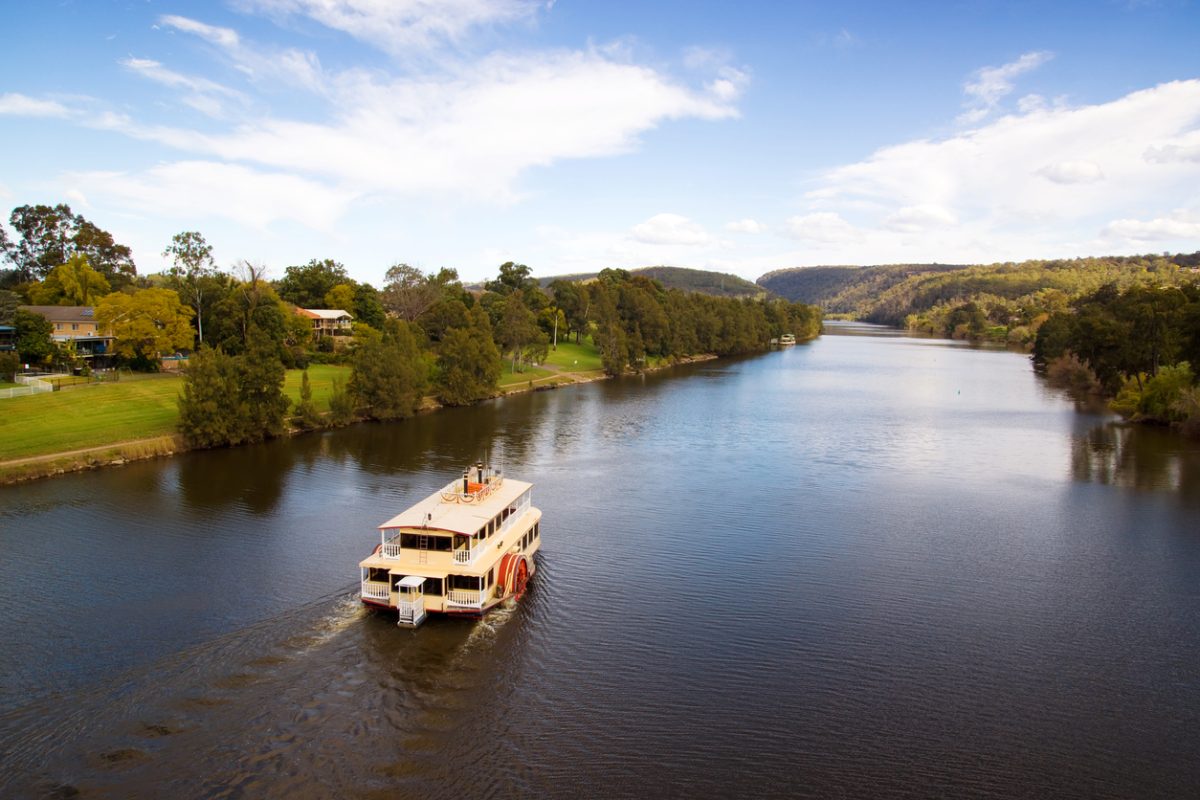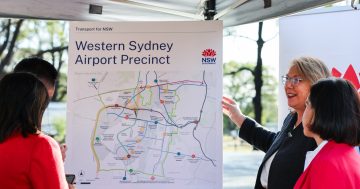
A classic paddle wheeler makes its way down the Nepean River, passing houses in Penrith along the way. Photo: Kokkai Ng/iStock.
Major evacuation routes in Western Sydney’s flood-prone Hawkesbury-Nepean Valley are to be upgraded as more than 10,000 proposed floodplain developments have been blocked.
The extreme depth of floods in the valley – of which there were six between 2020 and 2022 – means thousands of vehicles need to evacuate at short notice using roads not designed for that volume of traffic.
The NSW Government is investing $200 million over two years as part of a $550 million spend over a decade to improve these roads. The $200 million will enable work on the Pitt Town Bypass, Garfield Road East at Riverstone and Richmond Road upgrade from the M7 to Townson Road. Projects include road shoulder widening, new drainage and bridge structures, road raising, pinch point upgrades and other drainage improvements.
Minister for Roads John Graham said the funding would ensure roads were ready for people to get out and emergency services to get in during times of crisis.
“We made a commitment to Western Sydney to get flood mitigation right and this initial $200 million will help improve preparedness for the next flood or bushfire event,” he said.
“We know the population has increased significantly in the Hawkesbury-Nepean Valley and it is essential we build the roads that cater for the size of the community in good times and bad.”
The Hawkesbury-Nepean Valley Flood Evacuation Road Resilience Program has also undertaken investigations at several other locations on roads between Richmond, Jordan Springs and Cranebrook.
The road upgrade funding announcement came as the State Government further announced it had rezoned parts of Western Sydney to ensure new homes were no longer built on high-risk floodplains.
Under the rezoning decision, draft plans for the Marsden Park North precinct and Riverstone Town Centre will not proceed, while plans for the West Schofields precinct will partially proceed subject to strict conditions. The three projects all fall within the Hawkesbury-Nepean Valley floodplain and were put on hold in 2020 until further flood risk investigations and evacuation modelling were completed.
Of the about 12,700 new proposed homes, only up to 2300 will now proceed. Work is underway to understand where more housing can be accommodated to mitigate the impacts of these decisions.
Strategic planning expert Professor Roberta Ryan has also been appointed to provide independent community liaison support to help affected landowners understand and navigate the issues.
NSW Planning and Public Spaces Minister Paul Scully said the approval of new developments could have impacted the ability of both new and existing residents to evacuate safely during emergencies.
“I’d rather a disappointed landowner confront me over a decision we’ve made to keep them safe, rather than console them when they’ve lost a loved one because of floods,” he said. “We will put an end to unsuitable development on dangerous floodplains which puts lives at risk and destroys livelihoods – this model gives us the technical data needed to make those informed decisions and balance competing priorities.”
The land-use planning decisions follow the release of an independent expert inquiry into the preparation for, causes of, response to and recovery from the 2022 flood event across the state of NSW.
Key recommendations included revised and updated flood modelling and disaster adaption plans, which were instrumental in the NSW Government’s decision to knock back certain developments.
Flood modelling will also be used to reduce risk to life by informing better evacuation routes, assess potential road infrastructure options and inform decisions on potential future developments.
The NSW Reconstruction Authority is working on a State Disaster Mitigation Plan and regional Disaster Adaptation Plan to reduce the impact of floods in the Hawkesbury-Nepean Valley.
NSW Western Sydney Minister and Deputy Premier Prue Car said the new tool would help plan for evacuations and also make emergency service workers safer by reducing risks.
“We know we can’t stop natural disasters from occurring, but we are committed to doing more to prepare for and prevent the worst of their impacts,” she said.








